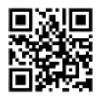
How safe is your bank?

The pace at which some of the banks and shadow lending firms have gone burst in recent years have completely shaken the faith of many depositors and savings account customers. Their hard-earned money has simply vanished in thin air, leaving them at the mercy of the RBI or seek government intervention for some monetary help.
In October last year, several depositors and customers lost their money after PMC bank went burst. Even as common man was yet to come to terms post the debacle of PMC, another bank, this time a much bigger private lending firm (Yes Bank) was on the brink, leaving its customers in total disarray. While RBI's timely intervention to bail out Yes Bank did provide some hope to the customers, the fact that many banks facing the financial stress in a tough business environment has left customers in a quandary about the safety of their funds in banks. While the sudden announcement of the closure of a bank comes as a rude shock to many, there are several indicators a customer can look for to know whether a bank is in trouble. Here are some of the key warning signs that customers need to look at in order to avoid being in a spot.

In today's scenario most of the big financial firms, be it banks or NBFCs, are neck deep in trouble because of the mounting non performing loans, or NPAs, on their books accumulated over the past few years. A key metric that a bank customer needs to look at it is a bank's gross & net non performing assets, which shows what percentage of bank's loans are in danger of not being repaid. This signifies that bank's asset quality is poor due to a very high gross NPA ratio. Similarly, net NPA indicates the health of the bank. Net NPA indicates that portion of bad loans which the bank doesn't provide for in the books. If your bank's net NPAs exceed 5%, it indicates bad lending practices.
Next is the provisioning coverage ratio (PCR) that customers need to check in a bank. If a bank has a high PCR, it indicates that most asset quality issues have been addressed. Similarly, if the bank has provided less for its bad loans, it is vulnerable to more shocks going ahead.
Another important aspect is the capital adequacy ratio (CAR) of the banks. CAR is the ratio of a bank's capital in relation to its risk weighted assets and current liabilities. A higher CAR shows that a bank is well capitalised and vice-versa in case of lower CAR. Also, one should keep an eye on the Current Account Savings Account (CASA) ratio. A lower CASA ratio indicates that the bank relies on costlier institutional borrowings to fund its operations. The credit-deposit ratio of a bank is another indicator you can track. A higher credit-deposit ratio suggests an overstretched balance sheet, and may also hint at capital adequacy issues. Other important metrics one needs to check are the bank’s Credit-deposit ratio, Net interest margin, and Return on assets.
One should be keep an eye on the key developments. Supposedly, if a bank delays its earnings announcement or the auditor of a bank has resigned or makes an adverse comment, then one should try to find out reasons for the same. Also, exit of key managerial personnel could be a signal of a trouble brewing within the bank. Besides, one should also monitor any rating downgrades by credit rating agencies. These are some parameters that bank customers should monitor regularly to avoid a shock later.

Customer Interview with Ivan Fernandes, Regent Technologies Ltd.
An automation evangelist, he is renowned for disruptive innovations such as RTGS and Mobile Banking with implemented solutions in over 60 banks across the Middle East, India, Far East and Europe. A thought leader and mentor, he is a successful serial entrepreneur, investor and award-winning pioneer.
Read More »
Customer Interview with Hemchand Gandhi, M.H. Enterprises Group
Founder & Managing Director, M.H. Enterprises Group Actively involved in the business, he leads the day-to-day operations for the Group. A ¬firm believer in God, and the ability of his co-workers, he treats everyone with a friendly smile. “Take care of all stakeholders and ensure every business partner is paid on time” is the mantra and key factor, driving the phenomenal growth and everlasting trust that M.H. Enterprises Group enjoys. He believes that success comes with dedication and hard work.
Read More »
